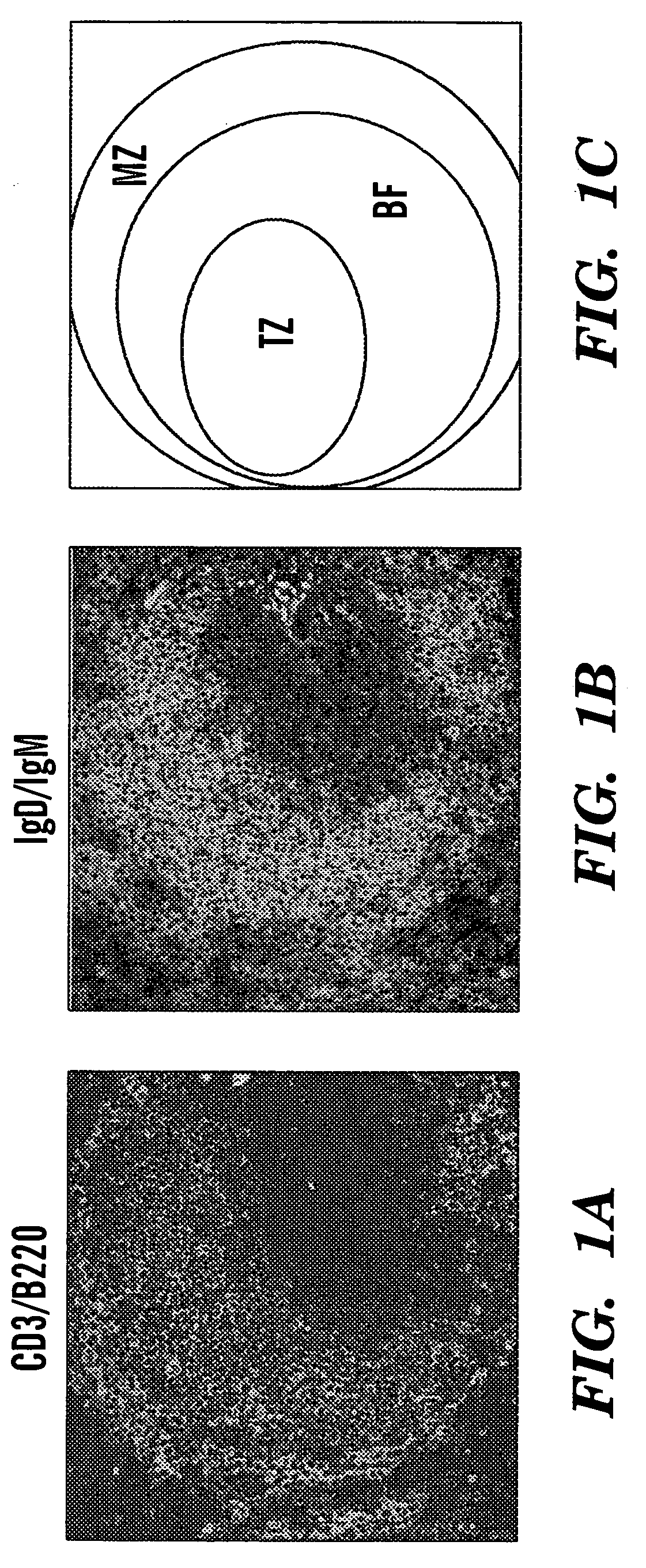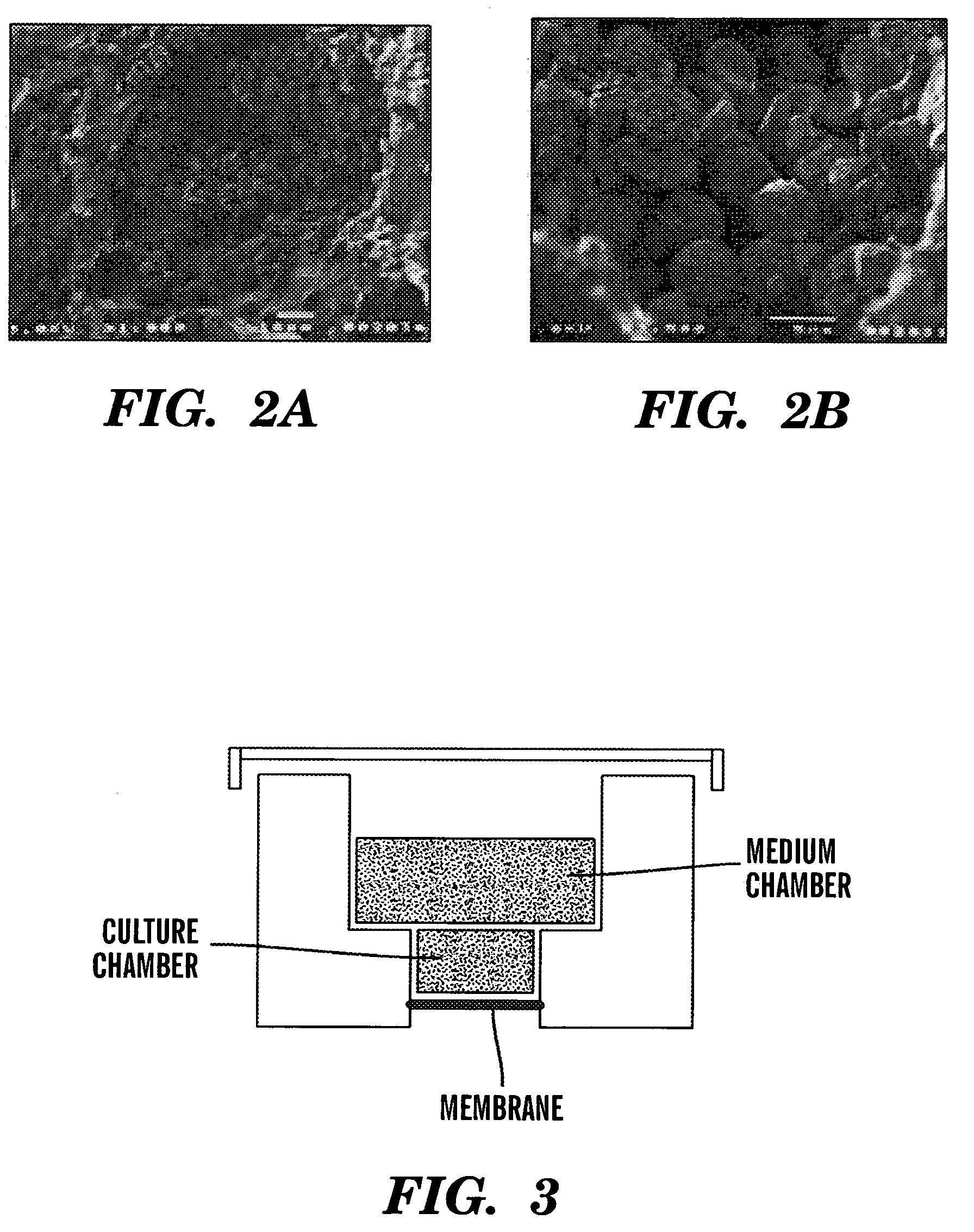Three-dimensional peripheral lymphoid organ cell cultures
- Summary
- Abstract
- Description
- Claims
- Application Information
AI Technical Summary
Benefits of technology
Problems solved by technology
Method used
Image
Examples
example 1
Three-D Culture System BioReactors
[0107] The 3D bioreactor system of the present invention was based on the hypothesis that lack of 3D structure and the consequent morphological distortion of the physiologic microenvironment could be responsible for the inability of long term in vitro cell cultures to support long-term maintenance of lymphoid cell cultures, as well as for the other alterations observed in the Dexter cultures (Wang et al., “Multilineal Hematopoiesis in a Three-Dimensional Murine Long-Term Bone Marrow Culture,”Exp. Hematol. 23:26-32 (1995); and Mantalaris et al., “Engineering a Human Bone Marrow Model: A Case Study on Ex vivo Erythropoiesis,”Biotech. Progr. 14:126-133 (1998)), which are hereby incorporated by reference in their entirety).
[0108] To test the feasibility of recapitulating the 3D structure and function of lymphoid organs in vitro, the scaffold-based, packed-bed bioreactor was adapted for culturing murine spleen cells using the principle previously demon...
example 2
Long-Term Culture of Unstimulated Splenic Lymphocytes
[0112] Total splenocyte preparations were generated by gently grinding fresh spleens from C57B1 / 6 mice in PBS, 5% fetal calf serum using frosted glass slides. About 20×106 live leukocytes were seeded onto each bioreactor, and cultured in complete RPMI medium, 10% FCS. A small amount of cells was harvested weekly by gentle pipetting from the matrix bed, and analyzed for expression of B and T-cell specific surface markers.
[0113] In striking contrast to flask cultures, significant fractions of B220 / IgM positive B cells were routinely detected as far as 8 weeks into culture (when the cultures were terminated). As shown in FIGS. 4A-F, these B cells expressed somewhat lower B220 and IgM levels than the majority of B2 cells in the spleen. They also shared some features with peritoneal B 1 cells, most notably expression of low levels of the CD5 antigen, shown in FIGS. 5A-H. However, unlike B1 cells, 3D B cells expressed CD23, a defining...
example 3
Long-Term 3D Culture B Cells Capable of Responding to in vitro Stimulation
[0117] To test whether 3D culture B cells are functionally competent, B cells were stimulated from a 2-week culture with the polyclonal activator LPS, and their response to this stimulus was compared with that of normal, ex vivo-derived splenic B cells. As shown in FIG. 9, 3D B lymphocytes proliferated to an extent comparable to primary cells, and upregulated the co-stimulatory activation markers CD80 and CD86, as well as the marker Syndecan-1, characteristic of Ig-secreting plasma cells, to levels similar to controls. In addition, they were able to undergo immunoglobulin class switching to IgG, a highly specific gene rearrangement process unique to activated B cells (Bottaro et al., “Local and General Regulatory Elements of Immunoglobulin Class Switch Recombination,” In Molecular Mechanisms of IgE Regulation, Vercelli, ed., Chichester, England: J. Wiley and Sons, pp. 155-177 (1997), which is hereby incorpora...
PUM
| Property | Measurement | Unit |
|---|---|---|
| Gene expression profile | aaaaa | aaaaa |
| Immunogenicity | aaaaa | aaaaa |
| Cytotoxicity | aaaaa | aaaaa |
Abstract
Description
Claims
Application Information
 Login to View More
Login to View More - R&D
- Intellectual Property
- Life Sciences
- Materials
- Tech Scout
- Unparalleled Data Quality
- Higher Quality Content
- 60% Fewer Hallucinations
Browse by: Latest US Patents, China's latest patents, Technical Efficacy Thesaurus, Application Domain, Technology Topic, Popular Technical Reports.
© 2025 PatSnap. All rights reserved.Legal|Privacy policy|Modern Slavery Act Transparency Statement|Sitemap|About US| Contact US: help@patsnap.com



